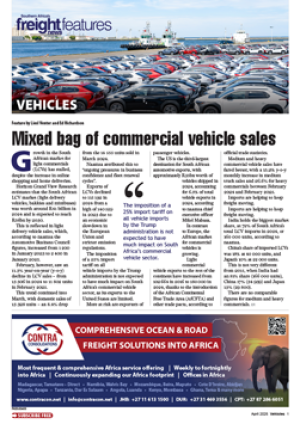Erwin calls for two new airports in Durban TERRY HUTSON GOVERNMENT HAS added a new dimension to the controversy surrounding the Dube Tradeport and its attendant King Shaka Airport. The Minister of Public Enterprises told Durban businessmen last week that the city needs not one, but two airports and that King Shaka Airport north of the city will go ahead. Coincidental to Alec Erwin’s public utterance, Aeroporti di Roma (ADR) recently relinquished its involvement in ACSA by agreeing to sell its 20% share for a whopping R1.67 billion. ADR has been considered to be one of the chief stumbling blocks of the Dube development and was known to be opposed to the King Shaka Airport. ADR held veto rights over ACSA’s airport development projects However, the minister’s open support for the retention of the existing Durban International Airport to the south of the city goes against conventional thinking, which argues that Durban air traffic levels do not justify a new and bigger airport. Erwin and others obviously think differently and believe that King Shaka Airport will unlock the region’s potential – the KZN north coast is already undergoing a boom with massive property development. The proposed airport will be able to accommodate the largest aircraft in service while Erwin also indicated that SAA intended investing in additional modern aircraft for cargo purposes. “The Dube Tradeport is currently a complex Public Private Partnership project, needing clearance from the treasury. If we can’t get the PPP issue solved we’ll have to look at other options. But the city needs two airports – this is my view as well as that of SAA. The (new) airport will happen, either with Plan A or Plan B.” But word on the street is that the associated Industrial Development Zone adjacent to King Shaka is dead on the water and unlikely to happen. Maybe the minister of trade and industry will now get involved! Lufthansa will be one of the first airlines to operate the new super-jumbo A380 to Johannesburg. They invited FTW’s David Marsh to Toulouse, France recently, where the first A380s are rolling off the assembly line. A380s set to change the face of aviation WHEN the new Airbus 380-800 Freighter takes off, its maximum take-off weight will be an astonishing 590 t. Designed to fly further with larger payloads at lower cost, 27 of these aircraft have already been ordered from Airbus. The A380 series is 50 cm wider that a Boeing 747 but it’s the full length top deck that gives it so much more capacity. For an airline that translates into 29% more payload and 50% more volume. The bottom line gain of being able to carry 34 tonnes more cargo 1400 nautical miles further means a 72 % productivity increase over the 747F, claims Airbus. South Africans will see the passenger version first. Lufthansa, Virgin Atlantic, Malaysia Airlines and Emirates have already notified our airport authorities that they want to fly here. Air France, Qatar and Singapore Airlines are likely to follow. Although a new passenger terminal with double-deck snorkels is being built at Johannesburg to handle four of these aircraft simultaneously, the freighter simply requires a higher cargo lift. The aircraft is actually shorter than a 747, and with its 20-wheel main landing gear its landing weight per wheel is lower. Airbus says that all of the 37 airports that currently handle 80% of 747 traffic today will be ready by the time the first A380 is ready to service them. Fifty A380 flights are expected to land in Johannesburg weekly by 2010. Boeing 747s were the revolution that ushered in the era of mass travel. Designed in the ‘sixties’, the last order placed for a passenger version was almost three years ago. Starting with a clean sheet and using pioneering design processes, Airbus has, for instance, saved 15 tonnes payload just by using advanced materials in 25% of the airframe. Innovations like this have resulted in an aircraft that the manufacturer says will be much more comfortable, productive and efficient and make it the ultimate competitive weapon on high-density routes. After taking into account the cost of ownership of the aircraft, the manufacturers claim the freight version operators will enjoy a 20% saving in cost per tonne over the Boeing 747-400 F. It is on South Africa’s high-density routes such as Frankfurt and London, where Lufthansa and Virgin respectively operate, that the passenger version will make the most economic sense. If it costs R1 500 to move a passenger one way on these routes, then even after paying for the aircraft, an airline moving 500 passengers each night both ways and saving 15% would enjoy annual savings of R82m. Double that on the London route where SAA and British Airways have up to three wide-body flights a night. In time Airbus will be able to manufacture four of these A380s a month. With the order book, including freighters, standing at 159, that means that even if British Airways and SAA placed an order today, the aircraft would only be delivered in 2011. In the meantime their competitors will be operating at a significantly lower cost. Fatigue testing on the A380 started this month, two months ahead of schedule. They will artificially recreate 47 500 flight cycles, which corresponds to 25 years of service life. The first Airbus A380 in commercial service should be in operation before the end of next year for Singapore Airlines between London and Sydney via Singapore. Airlines serving South Africa that are awaiting delivery of the aircraft are Lufthansa, Air France, Emirates (which has ordered 41!), Etihad, Malaysia, Qatar, Qantas and Virgin Atlantic.
